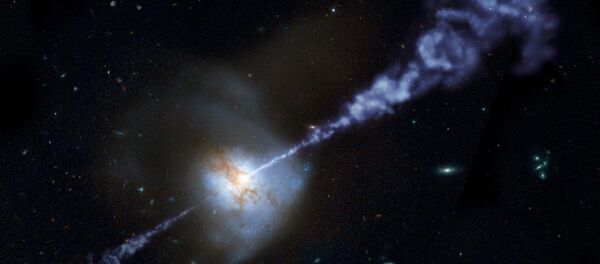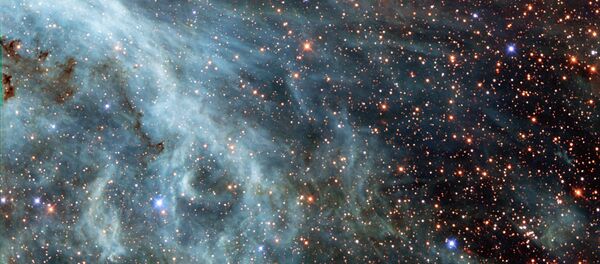The study from Northwestern University used supercomputer simulations of the little-known phenomenon of intergalactic transfer, whereby galaxies exchange matter after supernovas send enormous materials out of their systems. Scientists believe this phenomenon to be crucial to our understanding of galactic evolution.
The study found that supernovas shrink small galaxies to smaller and smaller sizes, and the matter they expel tends to flow into larger galaxies instead. This gas then forms new stars, making the large galaxies grow larger. As much as 50 percent of the Milky Way's mass may have co me from intergalactic transfer.
"Given how much of the matter out of which we formed may have come from other galaxies, we could consider ourselves space travelers or extragalactic immigrants," said Daniel Anglés-Alcázar, the study lead and postdoctoral fellow with Northwestern University's CIERA (Center for Interdisciplinary Exploration and Research in Astrophysics). "It is likely that much of the Milky Way's matter was in other galaxies before it was kicked out by a powerful wind, traveled across intergalactic space and eventually found its new home in the Milky Way."
"In our simulations, we were able to trace the origins of stars in Milky Way-like galaxies and determine if the star formed from matter endemic to the galaxy itself or if it formed instead from gas previously contained in another galaxy," added Anglés-Alcázar.
This process takes hundreds of millions or even billions of years. The study, "The Cosmic Baryon Cycle and Galaxy Mass Assembly in the FIRE Simulations," was published by the Monthly Notices of the Royal Astronomical Society.
Another CIERA scientist and Anglés-Alcázar's co-author, Professor Claude-André Faucher-Giguère, co-led the development of a numerical simulation to predict the behaviors of galaxies from formation after the Big Bang to present. This simulation, the Feedback In Realistic Environments (FIRE) project, was combined with Northwestern's algorithms to model the phenomenon of intergalactic transfer.
"This study transforms our understanding of how galaxies formed from the Big Bang," said Faucher-Giguère. "What this new mode implies is that up to one-half of the atoms around us—including in the solar system, on Earth and in each one of us—comes not from our own galaxy but from other galaxies, up to one million light years away."
"Our origins are much less local than we previously thought. This study gives us a sense of how things around us are connected to distant objects in the sky."






